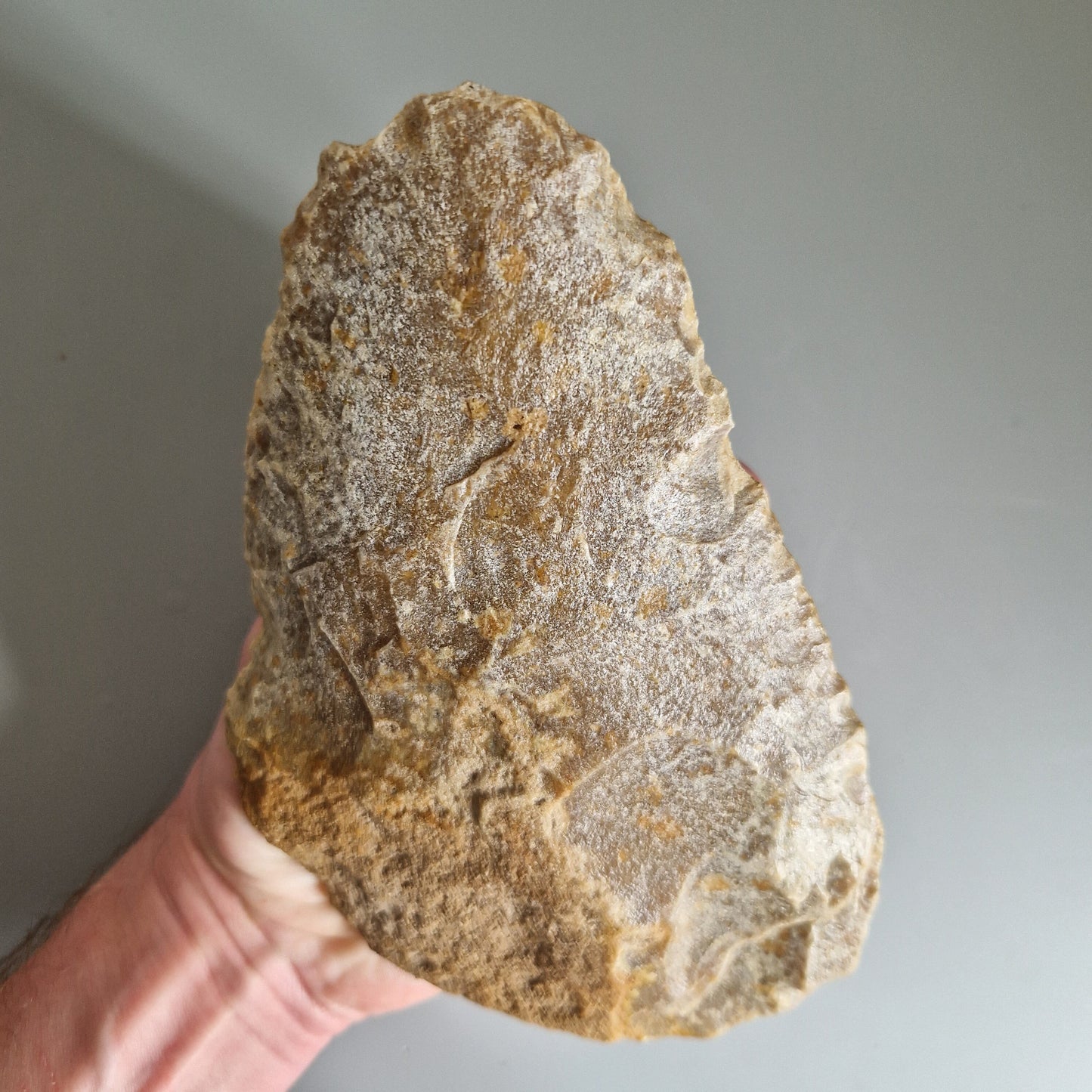Stone Age Artifacts
19cm Museum Quality Middle Palaeolithic Handaxe from "Graviers", De L'Aisne - France
19cm Museum Quality Middle Palaeolithic Handaxe from "Graviers", De L'Aisne - France
Couldn't load pickup availability
A very large and perfect with no modern damage, Middle Palaeolithic Handaxe/Biface from the famed Aisne region of France. Findspot recorded as "Graviers".
Truly Gigantic in size and proportions. Extremely rare to find a handaxe like this which is also so well made. To create a piece like this would of taken an experienced knapper, slender and confident sharpening.
Circa 150,000 to 250,000 years old. Achuelean in style and made from a large confident flake.
The material from Aisne is absolutely beautiful which sparkles in the sun from the micro crystals.
From the hundreds of thousands of years buried in the soil, it had taken on a gorgeous silvery cream patina which contrasts against the original ginger coloured stone.
18.5cm long and 13cm wide
717 grams!
Lower Palaeolithic;
The paleolithic period began with the first human occupation of the region. Stone tools discovered at Lézignan-la-Cèbe indicate that early humans were present in France from least 1.57 million years ago.
5 prehistoric sites in France are dated from between 1 and 1.2 million years ago:
the Bois-de-Riquet , in Lézignan-la-Cèbe , in the Hérault (1.2 Ma), discovered in 2008
the Vallonnet cave , in Roquebrune-Cap-Martin , in the Alpes-Maritimes (1.15 Ma), discovered in 1958
Terre-des-Sablons, in Lunery-Rosières , in Cher (1.15 Ma),
Pont-de-Lavaud, at Éguzon-Chantôme , in Indre (1.05 Ma),
Pont-de-la-Hulauderie, in Saint-Hilaire-la-Gravelle , in Loir-et-Cher (1 My).
None of these sites have thus far revealed any evidence of lithic industry which prevents identification of the human species responsible for them.
France includes Olduwan (Abbevillian) and Acheulean sites from early or non-modern (transitional) Hominini species, most notably Homo erectus and Homo heidelbergensis. Tooth Arago 149 - 560,000 years. Tautavel Man (Homo erectus tautavelensis), is a proposed subspecies of the hominid Homo erectus, the 450,000-year-old fossil remains of whom were discovered in the Arago cave in Tautavel.
The Grotte du Vallonnet near Menton contained simple stone tools dating to 1 million to 1.05 million years BC. Cave sites were exploited for habitation, but the hunter-gatherers of the Palaeolithic era also possibly built shelters such as those identified in connection with Acheulean tools at Grotte du Lazaret and Terra Amata near Nice in France. Excavations at Terra Amata found traces of the earliest known domestication of fire in Europe, from 400,000 BC.
From an old collection.
Condition is shown in pictures and video.
Share









